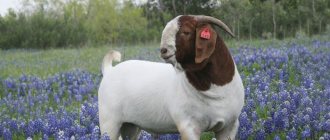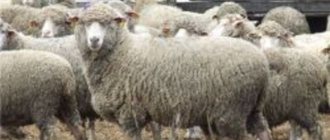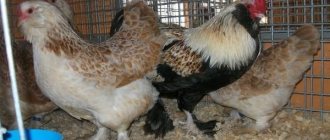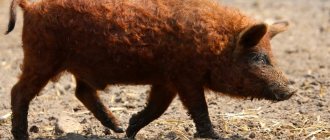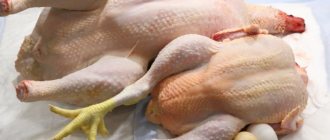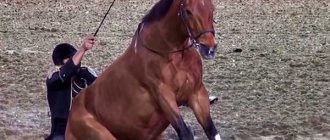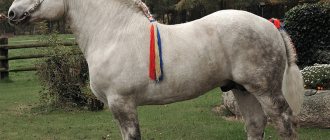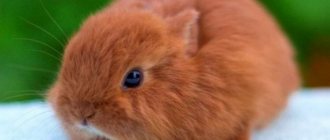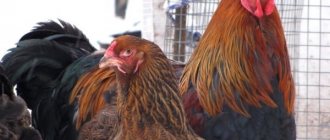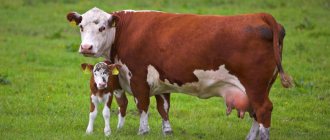When raising cows, the farmer aims for uninterrupted production and strives for productivity without interruption. Cattle are divided into dairy and meat. Milk is a popular product consumed by humans.
This article provides an expanded description of the Ayrshire breed, revealing the difference in care and maintenance by gender and age - bull, heifer, calves, heifers. The exact description can be compared from the image provided at the end of the article.
The origin of airshir, its popularity and prevalence
Ayr, a county in Scotland, is the birthplace of this suit. The climatic conditions of this region also influenced the characteristics of the animal. Endurance and adaptation to any weather conditions are the characteristics of the breed. At the same time, the taste of the milk does not suffer.
To breed a purebred Ayrshire, scientists needed a lot of time and several other colors: Dutch, Alderney, Teeswater, and then Scottish. At the very beginning of the 19th century, the first breeding farm was organized. The purebred Ayrshire finally gained a foothold in its new status in the 19th century, approximately in the sixties.
The popular Ayrshire cattle easily tolerates temperature changes and thrives in cold climates with high humidity and abundant greenery. Because of this feature, this breed quickly settled in Australia, Sweden, Scotland, Canada, England, Finland, and the northern American continent. In southern countries, cows are rare because cool weather is more suitable for them.
The Ayrshire breed and its breeding representatives came to Russia from Finland. Initially, the spread across Russian territory began in Karelia and Leningrad. Now in the world market the first place in breeding is occupied by Finland, and the second by Russia. A popular color for both private use and large farmland.
Interesting
Currently, a large amount of milk from Ayrshire cows is used to produce baby food.
Character of the cattle
Farmers admit that Ayrshire cows have a complex disposition. Many even refuse to breed "Scottish" dogs because of their restless nature. These cows are aggressive and at the same time extremely shy. Often it is fear that provokes their aggression. Increased activity complicates the maintenance and milking of Ayrshire cows.
Compared to other breeds, Ayrshires are very active. They are not satisfied with standing idle in one place; they begin to get nervous when they are in a confined space. For this breed, you need to arrange open pens where they can walk around freely and stretch their legs.
Full characteristics of Ayrshire cattle
Ayrshire is the best dairy, specially bred type of cattle. He will be able to live in mountainous areas without difficulty due to his physique.
Ayrshire has a number of advantages, a description is given below:
- unpretentious to weather conditions, can get along in hot and cold;
- acclimatization takes place without damage to milk yield;
- Ayrshire eats all food, there is no need to buy special preparations;
- pasture and stall feeding are equally acceptable for everyone;
- economically profitable type, the cost of milk is low due to savings on nutrition in the summer, when there is a lot of grass on the pastures;
- even with a meager diet, the amount of milk does not change, only its fat content decreases;
- do not suffer from mastitis or hoof diseases;
- the possibility of early fertilization without compromising the health of the heifer;
- easy calving that does not require active human participation;
- flexible, active character;
- the viability of calves is very high, the mortality rate is small;
- hardy to long distances;
- beautiful external data;
- absence of pathologies in young animals;
- longevity;
- in the summer, the opportunity to be content with pasture grass;
- absence of defects in genetics;
- using Ayrshires to breed and improve other breeds, Ayrshire genes dominate in crossings. Served as genetic material for the breeding of Norwegian and Swedish reds;
- Milk productivity is high regardless of various conditions, milk yield is always stable.
The Ayrshire breed of cows are breeding representatives of cattle, which are the first in dairy products. They have excellent immunity and high milk production
Among the disadvantages of Ayrshires, one can note fearfulness and stubbornness, as well as a deterioration in their general condition at elevated temperatures above +30 ° C. They do not always get along with other representatives of cattle, often show their tough character, and do not listen to the farmer.
The average life expectancy is 20 years.
External data
The Ayrshire breed of cows is not large compared to others. The average height reaches 125 cm. Body weight varies significantly between the sexes: heifers weigh 450-500 kg, and bulls - about 800 kg.
Body proportional:
- the body is short;
- the back is wide;
- the chest is narrow, there is a dewlap;
- the bones are not massive, the joints stand out;
- limbs are straight, low, correctly formed, large hooves;
- the horns are light, turned in different directions, shaped like a lyre;
- short hair;
- the muscles are developed at a sufficient level;
- the udder is regular in shape, thin skin, nipples are cylindrical or cone shaped;
- variegated color - white with brown and red tints, in most cases the red tint predominates;
- the head is narrow-shaped, small.
Heifers are always white and red, and bulls also have black spots. An untrained farmer may confuse the Ayrshire with the Guernsey. They have a similar color.
There is a generally accepted Ayrshire standard:
| Bull | Heifer | |
| Color | White, red, sometimes black | White Red |
| Weight | 600-800 kg | 450-500 kg |
| Height | 125-140 cm | 125 cm |
| Horns | Light, lyre-shaped | |
| Wool | Short | |
| Pastern girth | 15-17 cm | |
| Rib cage | 165-170 cm | |
Owner reviews
Ekaterina, 49 years old, Karelia
I keep two Ayrshires: one at the fifth calving, and the second at the third calving. In my opinion, they are very convenient for rural individual farming. The animals are small, and they need a rather modest size room for winter housing. We have grazing, so in the summer we save a lot on feed. I didn’t notice any difficulties with care. The cows are unpretentious and healthy. Our climate is easily tolerated. The milk yield is always decent (18-20 liters per day from my cows), the quality of the milk is very high, the taste is delicate, and there are no foreign odors. I make sour cream and cottage cheese and sell it; there is never a shortage of buyers.
Vasily, 67 years old, Novgorod region
“Scottish women” have lived with us for many years. Now we are keeping a very young one, in its second calving. When we bought the first ones (more than 20 years ago), we doubted that there would be any difficulties: there was information that these cows were too restive. It turned out that this is not quite the case. Animals, of course, are active and overly temperamental, but affectionate and intelligent. If you don’t keep them in stalls all the time, but let them “discharge” while walking, it’s quite possible to “come to an agreement” with them. We, pensioners, cope with our little cow without any problems: we calmly milk, clean, feed. We get excellent milk in sufficient quantities. It’s enough for us and for our children and grandchildren.
Irina, 51 years old, Moscow region
I'm still a beginner livestock breeder. I have been looking at cattle breeds for a long time. I wanted to choose a cow that would have good health, would not require elite feed, would calve easily and would not get sick. I chose the “airshiro” and I don’t regret it. The young chick was not cheap, but it completely met my expectations. Last year she calved for the first time. The baby turned out well: she eats well and grows quickly. I’ll probably keep it for myself to increase the herd. The mother cow almost immediately began to produce 23 liters of milk per day. Now our family has milk, cottage cheese, and wonderfully tasty butter.
Leonid, 56 years old, Leningrad region
For the northern regions, “Scottish” cows are undoubtedly one of the best. They feel good even in cold weather and rarely get sick. In summer, there is a noticeable saving on feed due to grazing. And in general, unlike Holsteins, they are not at all demanding when it comes to food: there is no need to buy expensive ready-made feed or carefully check their diets. Considering the stable productivity and excellent quality of milk, they are very profitable animals for keeping in a private farmstead.
Milk yield, production features
Being a dairy breed, the Ayrshire has a regular-shaped udder and pronounced nipples. The udder mass index is about 50%. The milk of Ayrshire cows is expressed with great efficiency, approximately 2 liters per minute, mechanically. There are practically no somatic cells in milk. This is of great value to farmers. Considered best for commercial project and personal use.
The annual volume of milk is 8000 liters. This indicator is provided by a female older than three years. The fat content of milk is quite high - 4%. High milk yield and milk fat content may remain high for up to 15 lactation periods. Record amount of milk – 12,000 liters. The protein content in milk is 3.50%. At the age of 16 years, milk indicators drop slightly, although older ones provide enough dairy products.
The taste of milk is excellent, the taste is delicate, pleasant, soft. There are no foreign odors or impurities. Baby formulas are made from the manufacturer's dairy products.
Ayrshire meat products do not differ in taste from the meat of other cows. Since it is a dairy type, its meat is mediocre. Meat slaughter is about 50%.
Milking requires compliance with mandatory rules:
- clean the milking room, close the doors to prevent drafts, tie up the animal;
- wipe the belly and legs with a clean rag;
- wash the udder, wipe dry;
- wash your hands and face, wear special clothes for work;
- start the process itself.
PRODUCTIVITY DEGREE
The achievement of high productive values was preceded by the efforts of farm specialists in improving herds and creating conditions for the realization of the inherent genetic potential. As a result, from 2012 to 2022, the number of herds with a milk yield of over 8000 kg increased from 1 to 13. Today, the average herd yield in the best Ayrshire farms ranges from 8071 kg in the Bialystok agricultural production complex, located in the Tomsk region, to 9113 kg of milk in SEC "Dalnyaya Polyana" in the Leningrad region. The same level of productivity in some herds was achieved in first-calf heifers: in JSC Volkhovskoye and SPK Dalnyaya Polyana in the Leningrad region, LLC Bokovo in the Moscow region, SPK Krasnoe Znamya in the Kirov region, LLC Polar Star in the Murmansk region areas. Animals of the second lactation in 13 herds also showed a high degree of productivity.
As is known, the genetic potential of any livestock is evidenced by the maximum milk yield of a cow and the proportion of such individuals in the total number. According to Russian electronic databases, in 57 Ayrshire herds, 266 representatives of different ages were identified with a milk yield for completed lactation of 11 thousand kg of milk and 324 heads with the same indicator for maximum lactation, which corresponded to 0.7 and 0.9% of the total number of lactating cows. In the first case, the average productivity was 11,587 kg of milk with a fat content of 4.12% and a protein level of 3.24%, while at the age of the third lactation the yield of milk fat reached 477.2 kg, milk protein - 374.9 kg. The majority of highly productive cows were recorded in the Leningrad region - 38.3%, the Republic of Karelia - 21.8%, Vologda and Kirov regions - 15.4 and 12%. Farms in the Moscow region accounted for only 19 such animals—7.1%.
Contents of the Ayrshire breed, its features
The barn should be dry, well ventilated, warm, without drafts or blowing. If there is insufficient air flow, animals suffer from ammonia suffocation. The method of walking rather than tethering in pastures is common. In the stall itself, when organizing a tethering area, do it using a pipe with a diameter of 0.1 m.
The room is kept at temperature conditions from 7 to 17 °C. It should be light enough; in the dark, 40 W bulbs will be enough. The flooring should be concrete, then the flooring should be made of wooden boards, with straw on top. When walking in an open space, it is necessary to equip a special canopy for staying in hot weather or rain.
The barn and livestock are divided into several sections - feeders and waterers, a conveyor for them, the stall itself for sleeping and resting, and a separate conveyor for manure. The stall is formed based on the size of the cow. The optimal dimensions are 1100 mm x 2200 mm.
Feeders can be made in two ways: mounted and local. The latter are placed in front of the stall itself in the form of a long trough, covered with boards on all sides.
A mandatory condition of maintenance is the cleaning of the barn and adjacent premises. To do this, all cows are taken out of the stall, manure and dirt are swept away, drinking bowls and feeders are washed, the room is ventilated, and the flooring is changed to clean and dry.
Important
It must be remembered that Ayrshire cows are very active. Therefore, it is difficult to force them to stay in a stall for a long time and sometimes need to be released into an open pen. This will help keep the cows in good health.
Cow diet
Ayrshire cattle are unpretentious to food. It feeds on root vegetables (potatoes, carrots, beets, parsnips, celery), cabbage, pumpkin, grass, hay, and mixed feed. Complex vitamins and minerals must be present. Sippy cups must contain clean water at room temperature. Salt should be freely available.
Chalk is considered an additional feeding; a cow should eat up to 50 g of it per day. Bran and crushed wheat, brewer's grains have a good effect on the taste of milk. Limit silage and haylage when preparing a balanced diet.
The general nutrition of Ayrshire cows consists of three stages:
- the main thing is roughage food (hay, grain husks and husks, straw, chaff). Feed several times a day. Remove uneaten food from the feeders, avoiding rotting and souring;
- balanced - food that affects the quality and quantity of milk. This could be oats, soybean meal, wheat cake, spent grain;
- compound feed – pour no more than 4 kg. With a large starchy composition - 2 kg. You cannot exceed the norm; excess provokes disruption of the entire digestive system.
Haylage is another type of food. This is a dried and preserved herb. It is not recommended to introduce haylage in large quantities, as well as silage. The latter is fermented green herbs.
An example of rational nutrition for a cow weighing half a ton:
- Hay – 7 kg;
- Silage – 30 kg;
- Beetroot – 6 kg;
- Sunflower cake – 1 kg;
- Wheat or oat bran – 0.5 kg;
- Ground barley – 1.5 kg;
- Water – 35 l.
With this diet, you can expect a daily milk yield of about 17 liters. When saving on food, the amount usually will not decrease. Only the quality of dairy products suffers. Milk is less fatty and not as valuable and rich in nutrients. If cows are abruptly switched to feeding on grass in the spring, bloating and stomach upsets are possible. To prevent this, you should reduce the herbal diet until the condition is completely stabilized.
What is included in the diet, what to feed?
The daily diet of Ayrshire cows includes the following components:
| Name of food | Quantity, kg |
| Hay | 2 |
| Silage | 20 – 25 |
| Compound feed | 3,5 – 7 |
| Barley | 0,5-2,5 |
| Wheat bran | 1 – 2 |
| Beer grains | 4 – 8 |
| Dry pulp | 1,5 – 3,5 |
| Salt | 0,075 – 0,1 |
| Minerals + vitamins | 0,05 – 0,1 |
The diet of cattle must be designed so that it contains all the necessary elements. To make the food for these pets more nutritious, salt and ground black pepper are added to it.
Calving of Ayrshire cows, features and difficulties
Ayrshires have been bred on Russian territory for more than 130 years. Only artificial insemination without natural processes is practiced. This contributes to the preservation of the purebred breed. Russia produces an average annual quantity of about 90,000 heads.
When breeding Ayrshire cows, you need to take the choice of bull and heifer seriously. Only healthy individuals can produce healthy, high-quality offspring. Ayrshire heifers must undergo veterinary inspection before mating.
Initially, the best bull in all respects is selected. For regular mating, one or several ancestor bulls are selected. It is the strong individuals that will support the line of purebred individuals. After the birth of calves from the selected bull, select the strongest ones for procreation. The line from one bull can be continued until the fifth generation. After this moment, the animal’s quality indicators begin to decline. The Ayrshire bull must also be vet checked before mating and matures quickly, just like the heifer.
The female has the characteristic of rapid puberty. By the age of one and a half years she is ready for fertilization. It is most effective and safe to do this in the spring, when grazing on pastures begins. During this period, the heifer is calm, not aggressive, and flexible. At two years old, a cow gives birth to her first calf. The udder is well developed, has thin skin, a cup-shaped shape, and defined nipples. This is a huge plus for the calf.
To maintain purebredness, the Ayrshire breed is not mixed with other species. Experienced farmers do not allow inbreeding. This spoils the genus by making substandard adjustments.
Childbirth is easy, without complications. The heifer has the ability to recover quickly.
Post-calving care must be of high quality for both the heifer and the calf. Stages:
- cleaning the placenta of the calf after birth;
- half an hour after birth, it is necessary to feed the cow hay and drink warm water;
- To maintain the quantitative and qualitative indicators of milk, a calved cow needs to be milked at least 5 times a day.
Ayrshire calves of this breed, their characteristics
The young are born with a low weight - up to 30 kg. Bulls do not weigh much more than heifers, the difference is only a few kilograms. Over the course of a year, the weight increases on average 10 times, body weight reaches 300 kg.
The calf quickly returns to normal after birth, stands on its feet, and suckles its mother. A distinctive quality is precocity; a calf can gain about 700 g per day.
Starting from 10 months, the general condition of the calf is assessed. There is no point in doing this before.
How are Ayrshires bred?
Breeding Ayrshires can provide real income if, after calculating everything, you organize rhythmic production. To raise milk-producing cows profitably, you should do the following:
- To acquire knowledge about breeding, keeping and feeding cows in summer and winter.
- Find reliable places to sell products. Products can be delivered to different points - shops, dairies, supermarkets.
- Prepare a business plan that takes into account all risks and costs.
- Register a business. Buy a plot of land for a farm, or rent it. Obtain permission from Rospotrebnadzor for your activities.
- Build barns in accordance with livestock standards. Adapt feeders and drinkers in it. Build stalls.
- Buy young animals. Animals are purchased in accordance with their intended purposes.
Farmers prefer to breed purebred Ayrshires - this helps prevent genetic defects. To increase milk productivity, livestock breeders often cross Ayrshire bulls with cows of different breeds - Holsteins, Red Steppes, Simmentals.
About the bull line
Today in the selection of dairy breeds the main emphasis is on breeding lines from one ancestor. A line of bulls refers to males that not only belong to the same breed, but also come from the same sire.
Types of bull lines:
- Genealogical. In this subgroup, bulls have one clan leader. It consists of bulls with a variety of pedigrees.
- Factory ones. It is created through careful selection to preserve the unique characteristics of the breed.
Breeding by lines:
- They find a bull, through which they will improve the qualities of the future livestock.
- Having assessed the quality of the offspring, they look for the ideal ancestor - the founder of the line.
- The ancestor is given to reproduce. Then they will reproduce his offspring - they will receive material for the next selection.
- After evaluating the bulls received from the ancestor, the best are selected. One successor of the family is determined. This is repeated again and again for each subsequent generation.
Bull lines are needed as long as the winning characteristics remain. But by the fourth or fifth generation they are fading away.
Calf selection
Before you have Ayrshire calves, you need to prepare for their care. If there is an appropriate room, walking, feed and everything else that is needed for raising young animals, you can choose calves.
Criteria for their assessment:
- Pedigree. The productivity of the mother cow and the bull line matters. Inbreeding - crossing close relatives is not encouraged.
- Development. They evaluate the body structure, how quickly the calf is growing and whether its constitution is strong.
- Live mass. Each breed has its own standards, based on which the weight of individuals of different ages is estimated. For example, it is known that one-year-old individuals should weigh about 250 kg, and if their weight is less, it is quite possible that they are sick or were born weak.
Young animals must be purchased from breeding farms. By contacting unknown sellers, you can become the owner of non-viable or outbred individuals. Pedigree farms raising Ayrshire cows:
- ONO PPZ “Smena” (Moscow region, Sergiev Posad district).
- OJSC Moscow Stud Farm No. 1 (Moscow region, Odintsovo district).
- Federal State Institution "Novoladozhsky" (Leningrad region, Volkhov district).
Diseases
The Ayrshire breed, characterized by good health, is resistant to common cow diseases. But they are not immune from pathologies that may appear due to violation of maintenance rules:
- Pneumonia. If the room is cold, the animals may catch a cold. If bacteria from the environment enter the lungs of a weakened animal, pneumonia may develop. Symptoms of inflammation are fever, wheezing when listening, heavy breathing, cough. Treatment requires effective antibiotics.
- Mastitis. It is treated with antimicrobial drugs and homeopathy. Symptoms of mastitis – clots in milk; soreness, inflammation and swelling of the cow's mammary glands. Remember, udder swelling can occur for other reasons.
- Poisoning. Due to the animal grazing in fields where poisonous plants grow, as well as if the storage conditions for feed are violated, the cow can become poisoned. In addition, it is necessary to limit the access of livestock to pesticides that can be used in farming and gardening.
For prevention, young individuals are vaccinated against:
- foot and mouth disease;
- rabies;
- smallpox;
- brucellosis.
Important points when buying an Ayrshire cow
When buying a calf for personal use and breeding, you need to remember a few basic rules:
- the purchase is made from trusted farmers, on main farms;
- the calf must be vaccinated, have a strong constitution, and weigh at least 250 kg at one year of age. If the weight is less, it is worth considering, because the animal may not gain enough weight due to illness;
- You need to buy calves from a high-quality, purebred ancestor bull. Inbreeding is not allowed. If it is present, 100% quality should not be expected from calves. Only strong thoroughbred Ayrshire bulls produce strong young stock;
- the calf must correspond to all the appearance parameters inherent in a given color. Even a discrepancy in one small detail can lead to the non-purebred of the family in the future.
Animal breeding
With the right approach and knowledge of the matter, breeding cows can bring considerable profits. It is important to consider some nuances:
- preliminary study of the peculiarities of keeping livestock in different seasons and feeding rules;
- If you intend to subsequently sell dairy and meat products, you must find places for their sale in advance: food markets, shops and retail outlets.
Herd of Ayrshire calves
In dairy farming, there is a fundamental direction of selection - breeding cows in accordance with certain lines.
What is a bull line
A line of bulls refers to a specific category of males belonging to the same breed and having a common ancestor. There are several types of lines:
- genealogical - consists of individuals that appeared from one ancestor. A given line may include different pedigrees;
- factory - created through careful selection, as a result of which the unique productive qualities of animals are preserved.
The line of bulls plays an important role in the formation of a healthy family; for this reason, the choice of the ancestor must be done carefully. In dairy cattle breeding, in order to improve the quality of milk, females from the best families can be used.
Calf selection
When purchasing an Ayrshire calf, it is important to pay attention to the following factors:
- Live mass. Each breed has certain standards, which is why you should definitely study the instructions for grading cattle.
- Calf development. Indicates the intensity of growth and overall physique. Young animals are assessed according to the degree of constitutional strength and the presence of defects in body structure.
- Pedigree . In this case, it is important to take into account maternal productivity and the line of the bull. Inbreeding should be avoided.
Ayrshire calf
It is important to buy a calf from bona fide, proven farms that have a good reputation, where they provide the pedigree of the calf.
Common cattle diseases
Ayrshire cows have good health and strong immunity. But there are cases when representatives of this species also get sick. Diseases are divided into infectious and viral. They can be either hereditary or acquired.
Infectious diseases are dangerous because they quickly infect the entire herd and spread at record speed. Therefore, at the first symptoms, the individual is isolated, and then a veterinarian is called.
Here is a list of the most common diseases of cows of this breed:
1. Leukemia.
Affects the blood system. This is a chronic disease. Provokes enlargement of the spleen and lymph nodes. Treatment is not effective. It is necessary to check the entire herd with regularity, removing weak animals.
2. Leptospirosis.
Infectious disease. Both young and adult individuals are affected. Checking pastures and local water bodies is an excellent disease prevention measure. Treatment requires a special vaccine in combination with an antibiotic.
3. Actinomycosis.
When wounds appear on the body, they must be treated without fail. Without treatment, this disease is provoked due to a fungus. A tumor appears, turning into a fistula. It is removed surgically. At the first stage, treatment with antibiotics is possible.
4. Blockage of the esophagus.
Non-communicable disease. Occurs after feeding a cow with uncrushed food and root vegetables. Symptoms: restlessness, swelling of the right side, salivation, stopping chewing gum. To remove the plug, pour in vegetable oil and press on the esophagus.
5. Retention of placenta.
He should leave immediately after calving. If this does not happen after 6 hours, contact your veterinarian.
6. Brucellosis.
Causes miscarriages. Calves may be infected. Dangerous for humans and all representatives of large and small livestock. Once this disease is identified, both people and animals must be tested.
7. Foot and mouth disease.
Affects animals and humans. The first days the symptoms do not appear, but then they are as follows:
- formation of swollen blisters with liquid on the body;
- temperature rise to 42 degrees;
- excessive salivation;
- lameness due to hoof lesions;
- formation of ulcers.
8. Smallpox.
Provokes a rash on the udder and an increase in temperature. Milk yield becomes scanty and very thin and watery.
9. Tuberculosis.
The defeat occurs mainly in winter, without abundant walking. Incubation – 6 weeks. Infection is dangerous for both cows and humans through air, milk, and mucus. Symptoms: fever, fever, cough, shortness of breath.
10. Rabies.
Inappropriate behavior towards members of one's own family and person. Cannot be treated. If strange behavior occurs, you should try to close the animal, hide yourself, and urgently call a veterinarian. The cow is disposed of by burning its remains.
11. Pneumonia.
It starts due to dampness in the barn, cold floor. The temperature rises to 40 degrees, accompanied by cough and fever.
12. Mastitis.
Appears after calving due to certain drugs, after injury, shock, hypothermia. A gray secretion is released from the nipples, the milk becomes watery and liquid. Treatment is carried out with the help of antibiotics and additional herbal remedies. Rice starch is a good home remedy.
Tips for livestock breeders
Experienced farmers recommend dehorning Ayrshire cattle, since their overly hot-tempered and pugnacious disposition often provokes clashes within the herd. Frequent and long walks are also useful for cows and bulls of this breed, because keeping animals indoors for a long time negatively affects their well-being. It is important to vaccinate and constantly check the herd for diseased animals to prevent disease.
Cows on the go
Ayrshire cow sales locations
You can buy the Ayrshire breed from private farmers and on large and small farms. Several contacts are offered for making a good deal:
- Victor, Moscow, tel.;
- Daria, Moscow region, Sergiev Posad, tel. +7 915 275 95 35;
- Irina, Moscow, tel.;
- Alexander, Pskov, tel.;
- Elya, Leningrad region, Lodeynoye Pole, tel. +7 921 981 83 64;
- LLC "Cherepovets breeding enterprise", Vologda, tel. +7;
- GKFH Ilchenkov Yuri Vasilievich, Krasnodar, tel. +7 938 528 44 88;
- Vologdaplemservice LLC, Vologda, tel. +7 921 714 43 34.
Description
Purebred cows are distinguished by their large dimensions. The external structure is strong, the cows have an angular, elongated body. They are not very beautiful, but their milk production indicators are good. The breed type belongs to the mixed meat and dairy direction. Adult individuals weigh:
- heifers – 600 kg;
- steers – 1000 kg.
The milk yield of cattle is from 3 to 5 thousand kg of dairy products per lactation. Cattle adapt well to harsh conditions. Thoroughbred individuals are hardy and resistant to many common diseases.
Body Characteristics:
- rounded chest;
- strong body;
- slightly thin legs.
The sacrum is higher than the main frame, the spine is straight. With age, milking specimens acquire a cup-shaped udder. The udder lobes develop evenly. Adult animals grow up to 135 cm, dairy cows weigh approximately 500 kg, and one-year-old bulls weigh 850.
The calves of this breed are large, weighing up to 37 kg at birth. Under optimal conditions and good nutrition, they quickly gain weight, gaining up to 200 kg by the age of six months. Meat qualities are satisfactory, the slaughter yield of meat can reach up to 60%. Average milk production from an adult dairy cow varies within 4 thousand liters per lactation. With ideal walking and feeding methods, the record holders produce up to one hundred thousand liters. The fat content of dairy products is 3.9%.
Popular species in Russia and their characteristics
Some of the cattle mentioned above are largely distributed on the territory of the Russian Federation. Below is a list of the main breeds of this type.
Black and white
This breed of cows appeared as a result of crossing Dutch cows with local animals. Thanks to selection, several separate varieties of the black-and-white breed have been developed, adapted to different environmental conditions.
The black-and-white variety can be recognized by the following characteristics:
- dense, proportional build, wide rear;
- thin and fairly long legs;
- thin and elastic skin;
- relatively small head with short horns, flexible long neck;
- black and white color or black color with white spots;
- The udder is medium in size, depending on the region, it can be cup-shaped or round in shape.
It is bred to a greater extent for the production of milk with an average fat content of up to 3.5-4% and a protein content of up to 3.2%. In a year, an individual can produce more than 5 tons of milk. The average weight of a heifer is 500 kg, a male is 750-800. Average slaughter yield ~ 60%.
Holstein
In appearance, Holstein cows can easily be confused with the black and white breed; both have a characteristic black and white color and a fairly dense build. In rare cases, Holstein cows may have a red-brown color.
Holsteins are known as a breed that gains weight well; the specific weight of one cow can in rare cases reach 1 ton, while the weight of a bull is 1200 kg. Calves at birth weigh from 35 to 50 kg, but in a year they can gain up to 800 kg.
Externally, Holstein cows have a short stature (up to 135-140 cm, bulls up to 160 cm), a moderately large build, a wide chest and a developed cup-shaped udder. The head is small, the muzzle is slightly elongated.
Holsteins are known as record holders for milk production in Russia. There are cases when one cow could produce up to 20 tons of milk in a year. The result, unfortunately, was not justified, since with the chosen feeding method, the quality and fat content of the milk dropped significantly.
The average productivity for one cow will be approximately 7500 liters per year, while the fat content remains at 3.8-4%.
Despite their good milk production, Holsteins are often raised for good beef. The slaughter yield is no more than 55%, but even the most elite breeds can envy the quality of meat.
Kholmogorskaya
One of the most common types of dairy cows in Russia. Almost every farmer is familiar with this variety. The breed is characterized by good resistance to adverse weather conditions, good milk yield and milk fat content.
The breed has a black and white color, well-developed muscles, a wide hindquarters and thin legs. The head is regular in shape, the neck is flexible, long, and the udder is very well developed and round in shape.
Adult cows reach 600 kg in weight, bulls - up to 1 ton. The average height is small - up to 130 cm. The average milk production per year is about 4 tons.
Red steppe
It was bred exclusively for breeding in the southern regions of the country with an arid climate and insufficient amount of fresh grass on pastures.
The average weight of a cow is from 550 to 650 kg, a bull - up to 800 kg. The growth is small - up to 140 cm. Milk productivity indicators are quite impressive - up to 6 tons per year, and in rare cases (with good food and care) - up to 10 tons. The amount of fat is optimal and fluctuates around 3.5-4%.
Kostromskaya
In the USSR, this breed began to be bred back in 1945; it was obtained by crossing the Schwyz and Yaroslavl breeds. It is distinguished by its gray, sometimes brown color and tightly built physique.
The weight of an individual heifer reaches 800 kg, a male – 1200 or more, height up to 1.5 meters. It can produce up to 6 tons of milk per year with a fat content of 3.8-4%. Cows of this breed are distinguished by easy calving, rapid growth and good adaptability to different weather conditions and types of feed. The species is considered one of the most common not only in Russia, but also in Belarus.
Yaroslavskaya
The variety is considered one of the best among domestic dairy breeds. It is distinguished by its characteristic black color with rare white spots, an elongated proportional body, a long neck with a small head.
It is distinguished by weak bones and lack of developed muscles, the skin is thin and elastic, the average weight of heifers is no more than 5 centners, bulls - up to 800 kg. Milk productivity is above average - about 6 tons per year, taking into account the total fat content of a good 4.5%.

